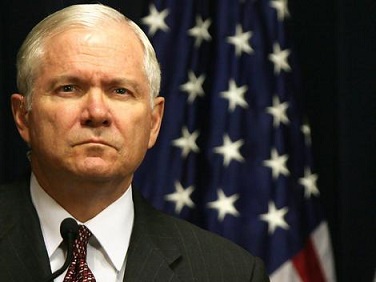
Defense acquisition reform has a long and distinguished record of failure.
Ever since Robert McNamara attempted to reform a system that at the time was yielding cost overruns and schedule delays, successive secretaries and deputy secretaries of defense, legislators, and congressionally-mandated commissions have proposed changes in the nature of DoD’s management, its organization, its bureaucracy, its processes, and its contracting methodology. And still programs overrun, and still schedules slip, and still there are cancellations.
Any effort to list all the attempts at acquisition reform would, at a minimum, call for an extended length article, if not a full length book. What follows is but an exceedingly brief overview of some of the many attempts to reform defense acquisition.
The McNamara Approach
Then-Secretary McNamara centralized defense management, introduced new methods for source selection and contracting, reformed the management of ongoing acquisition programs, and created new organizations to manage contracts and their costs. His management reforms included the introduction of PPBS — the Planning Programming and Budgeting System — which, to McNamara’s own amazement, remained virtually unchanged as late as 2001.
McNamara also created an office of systems analysis to evaluate which programs might be the most cost effective, and thereby determine the fate of programs that had badly overrun their cost estimates or fallen short of their performance targets. His introduction of what he expected to be a rigorous source selection process also included contractor performance evaluations, parametric cost estimates, and efforts to produce more rigorously definitive contracts. His innovations in contract management included cost information reports, PERT (program review and evaluation technique) to manage scheduling, and configuration management controls. Finally, McNamara created the Defense Supply Agency, the Defense Contract Administration Service (DCAS) and the Defense Contract Audit Agency (DCAA).
Many of McNamara’s innovations have remained part of the DoD acquisition process. Yet these changes did not produce desired results.
Like PPBS, many of McNamara’s innovations have remained part of the DoD acquisition process. Yet beginning with McNamara’s own tenure, these changes did not produce desired results. Among McNamara’s programmatic failures were the huge overruns on the C-5A tanker and the troubled production of the TFX fighter/bomber, which became the F-111. Moreover, in a pattern that would repeat itself, and would undermine any long term progress in acquisition reform, many of McNamara’s innovations were so severely modified as to be virtually unrecognizable from their original form. For example, while the Services — in line with McNamara’s Total Package Procurement (TPP) policy — adopted fixed price contracts as their primary acquisition vehicle, their frequent use of engineering change proposals, together with their reluctance to implement the policy, rendered the fixed price constraint meaningless. It also did not prevent cost overruns, and led to the Nixon Administration’s abandonment of TPP.
Apart from PPBS, only the agencies and organizations that McNamara created survived, though the latter in many cases with different names — which is a testimony to the tenaciousness of the bureaucracy when it comes to matters concerning its ongoing existence. Thus, Systems Analysis became Program Analysis and Evaluation (PA&E), which became Cost Assessment and Program Evaluation (CAPE). And while DCAA has retained its name, its record in recent years has not been without blemish. DCAS is now the Defense Contact Management Agency (DCMA), and it too has a record that is spotty at best.
Packard’s Management by Objectives
In what would become a half-century pattern of metronomic changes in defense procurement, DoD under then-Secretary Melvin Laird and his deputy David Packard essentially jettisoned McNamara’s approach by instituting what they termed “management by objectives.” The system was meant to focus on requirements definition, with implementation decentralized to the Services. Packard created a new committee, the Defense Systems Acquisition Review Council (DSARC) which would oversee the new process and certify the readiness of every major program to move to the next stage (termed “milestone” ) of the acquisition cycle. Packard also pushed for the training of program managers, both military and civilian, which he felt was severely lacking. Finally, Packard favored cost-reimbursement contracts for the development phase of weapons systems, thus reversing in part McNamara’s preference for fixed price contracts. Indeed, in a pattern that was to repeat itself over the years and in successive administrations, wherever Packard found that his reforms conflicted with current DOD directives, he had the directives changed to suit his preferences.
Naturally, the Services applauded those elements of Packard’s changes that restored their power to manage programs, most of which were also recommended by the 1970 Fitzhugh Commission report. In practice, however, there was far less change than Packard had anticipated. For example, the DSARC, in many ways the centerpiece of Packard’s reforms, evolved from what Packard intended as an ad-hoc oversight group into a highly stylized, highly bureaucratized committee. It tended to rubber stamp arrangements that were made elsewhere, usually between the acquisition chief (whose title changed over the years) and the service managing the program in question.
The Services applauded those elements of Packard’s changes that restored their power to manage programs… In practice, however, there was far less change than Packard had anticipated.
Similarly, Packard’s demands for better training for military program managers in particular were never fully realized. The Services jealously guarded their control over an individual serviceman’s education and training life cycle and passively resisted any changes imposed on them by the Office of the Secretary of Defense (OSD). Programs continued to flounder under managers who not only were not fully trained to deal with their increasing complexity, but also focused more on minimizing blatant mistakes so they could move onto their next jobs. Such an approach led to more errors, not fewer, and the overruns and schedule delays, and indeed, cancellations of all or part of programs, continued apace.
Ensuing decades have seen further attempts at reform, including a commission that Packard himself headed in 1976, which, like the Fitzhugh Commission, bemoaned the endemic shortcomings of the acquisition process and recommended a host of changes that, even if introduced, were never fully implemented as the Commission intended. Titles changed — the Director for Defense Research and Engineering became the Under Secretary for Research and Engineering who became the Under Secretary for Acquisition, who became the Under Secretary for Acquisition, Technology and Logistics. Committees changed their names — the DSARC, on which this author served in the mid-1980s, became the Defense Acquisition Board (DAB), on which this author served in the early 2000’s. But little else changed.
Personal Intervention, from Rickover to Gates

When programs were successfully managed or brought under control or carried out in timely manner from their inception, they were either the product of sustained long-term management by the same individual, or the result of personal intervention by the Secretary of Defense himself. An example of the former case was, and still is, the Navy’s nuclear submarine program, which for three decades beginning in the 1950s remained under the tight control of Hyman Rickover. Rickover led the program from the time he was a captain through a series of promotions, ultimately culminating in his serving as a four-star admiral. The program remains under the leadership of a four-star admiral whose tenure is set for 10 years, the longest for any program manager.
Another example is that of the Navy’s AEGIS combat system, which initially was geared to defend against air attacks and, subsequently, against attacks by ballistic missiles. In 1970, within a year of RCA being awarded a development contract for the system, Captain Wayne Meyer was assigned to manage the new program. His successful tenure as its overseer lasted 13 years; AEGIS is now one of the backbones of the U.S. missile defense program.
The B-1 bomber and the Mine Resistant Ambush Protected (MRAP) programs are two cases where sustained personal intervention by the Secretary of Defense was the key to their being fielded successfully. The B-1 program, cancelled during the Carter Administration and revived as the B-1b when Ronald Reagan took office, was in deep trouble when Secretary Caspar Weinberger decided to chair regular meetings with his staff and the program manager until the program was re-set on course. At times, those meetings were held weekly. Weinberger took an active role, peppering the Air Force general in charge with questions and demanding detailed updates. Weinberger’s intervention saved the program.
The MRAP program would never have come into being were it not for the personal exertions of Secretary Robert Gates.
The MRAP program would never have come into being were it not for the personal exertions of Secretary Robert Gates. Faced with the devastating effects of increasingly sophisticated improvised explosive device (IED) attacks on American service personnel in Iraq, Gates forced through a program that was initially resisted by the military, incorporated a combination of foreign built parts (normally anathema to the DOD bureaucracy), and drew funds away for other projects. The program proved hugely successful and saved hundreds, if not thousands, of lives in Iraq and Afghanistan.
The lessons of the nuclear submarine, AEGIS, B-1b and MRAP programs is that ultimately, it is personnel competence, management longevity, and sustained leadership from the very top of DOD that are the key to taming the runaway mess called defense acquisition. Without educated human resources, for management, contracting, and supervision, without long term program leadership, without commitments by successive DOD leaderships, regardless of party, acquisition reform will remain a chimera.
The fact that the current effort by the House Armed Services Committee to reform defense acquisition is a bipartisan undertaking bodes well for the prospect that legislation will be forthcoming. But unless that legislation focuses primarily on training and longevity of management, and on the need for DOD’s leadership — of whatever stripe — to adhere to the reforms of its predecessors, little will change, even with the best of Congressional will.
For at the end of the day, it is people — not processes, much less concepts that are all too often converted into mere buzzwords — that are most in need of reform and that will be the key to a truly successful overhaul of the defense acquisition system.
From 2001 to April 2004, Dov Zakheim served as Under Secretary of Defense (Comptroller) and Chief Financial Officer for the Department of Defense, serving as principal advisor to the Secretary of Defense on financial and budgetary matters, leading over 50,000 staff, developing and managing the world’s largest budgets, and negotiating five major defense agreements with US allies and partners. He currently is Senior Advisor at the Center for Strategic and International Studies and Senior Fellow at the CNA Corporation, a federally funded think tank. He also serves as a commissioner on the Military Compensation and Retirement Modernization Commission and as a member of the Defense Business Board.




